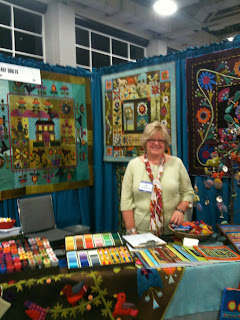Over the past couple of years I’ve been learning a good bit
about upholstery and home dec sewing. (And I still have MUCH to learn.) Through
this work I’ve been privileged to see some absolutely gorgeous homes. I think
it’s great fun to observe the impact of textiles on a house. Fabric accents—from
curtains to pillows to art pieces and more—have the power to calm, brighten,
enthuse, and harmonize, to name only a few effects. The opposites of
all those positives are out there, too, and, of course both positives and
negatives are extremely subjective.
I imagine that most of the population (and
I know EVERYBODY-ha, ha) pays little attention to the “fabric of our lives”,
but for those of us who do, isn’t it a pleasure to walk into a room, enter a
store, or peruse a decorating magazine and analyze its effect on us? Do you
look for fabric touches and try to determine if they’ve been included
intentionally or simply because, let’s say, a sofa was needed and someone liked
the color red?
All that to say, if you’re dissatisfied with one of your own
rooms and hoping to improve it with textiles, there are some general design
principles that may help as you make decisions. There are plenty of brilliant,
gifted, generous designers who share their knowledge through a variety of
media, so I won’t attempt to list all the possible considerations for changing
or adding to your décor, but I do want to remind you of one that is true for
quilting, home dec, and the visual arts. It’s VALUE. Unfortunately, that’s an
overused word that can mean several things, but in relation to design it means
how light or dark something is. For a room, a quilt, a painting, etc., to
produce the effect you want—visually, as well as emotionally—it’s critical that
there be some difference in value included, be it a subtle or a bold one. An extreme illustration of a lack of
value difference would be a room in which every single element is white. Take
that example further and imagine that every piece of furniture is made of wood
that’s been painted white. Pretty boring, huh? Now imagine adding
cappuccino-colored cushions to the sofa and chairs, and then a few throw
pillows in medium to dark shades of brown (or red or green or blue. . .).
I’m probably not telling you anything you haven’t heard, but
if you’re new to quilting or home dec sewing, you may be intimidated by the
amazing amount of choices that are out there. Before I go any further, though,
let me say that if you really like a combination and you’re the one who’s going
to be living with it, FORGET THE RULES! But it may be that observing the “value
rule” will make you even happier with your choices.
One of my first upholstery projects was a sweet little
wingback chair for an artist friend of mine. Look at the photo and think about
what makes the chair and the room work. It may not be your style, but I’m sure
you’ll appreciate the beauty of her choices both in color and value. Send a
photo of one of your favorite rooms to kara@greenchairstudios.biz, and I’ll
share it here in the blog.
One last fun thing: www.polyvore.com
is a website that was originally geared toward wearable fashions, but now
has some fun interior design pages. You can use Polyvore to create a layout of
a group of individual items you like. It’s fairly simple to use, so if you’re
in the mood to play interior decorator or fashion consultant, it’s the place to
go.















